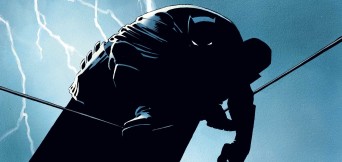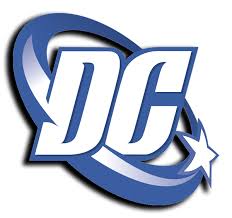As a writer of fiction, I can tell you that sometimes there is a need for darkness. Your tone is directly dependent upon the world that you’ve created. I think that’s why the contrast between the Marvel and DC Cinematic universes tends to get audiences buzzing.
It’s no secret that I’m a big DC fan, even though I also enjoy Marvel. Personally, I feel that the market has left DC understated until recently. I’ve been excited to see official DC theatrical releases in the pipeline. The thing that troubles me, however, is this constant comparison between Marvel and DC and the tendency to devalue DC films for being “too dark.”
Who wasn’t super-flipped-out to see the full Justice League trailer? I know I popped some popcorn and watched the thing dozens of times. So, imagine how surprised I was to see the headline on Wired.com that read “The New Justice League Trailer Is Everything Wrong with DC’s Dark Movie Universe.”
As I’ve said, just because I favor DC doesn’t mean that I don’t love Marvel. Spiderman is one of my absolute favs, and I’m super-excited to see Homecoming! However, I can’t help but feel that a lot of the negativity surrounding DC cinema is because it’s not a carbon copy of the Marvel style.
 Now, writing and execution aside, let’s explore this idea using a general subset of critical responses for Dawn of Justice as an example.
Now, writing and execution aside, let’s explore this idea using a general subset of critical responses for Dawn of Justice as an example.
- From the Boston Globe: “‘Batman v Superman’ is dark and chaotic”
- From CinemaBlend: “Batman V Superman Trailer: Is This Too Dark For Superman?”
- From Rotten Tomatoes:
- A movie that beats you into submission and makes you wonder if the sun will ever come out
- Remember when comic book movies were fun? Well, you’ll have to use your memory because there’s not much fun to be found in Batman v Superman: Dawn of Justice.
- The superhero world needed better storytelling, a comic touch and more than a few rays of sunshine.
This general disdain for “darkness” distresses me. It seems like the current expectation is that all movies in the superhero genre be overflowing with slapstick moments and rainbows. If I were to rate Dawn of Justice on a literal scale of 0-100%, I would place it at a firm 77%. Even with me being a die-hard DC fan, I wouldn’t go so far as to say that the movie was a perfect balance in execution and style. There were indeed moments I would have done differently were I to have been in the Director’s seat, and certainly, if I would have been writing the script. I wasn’t overly excited with Jesse Eisenberg as Luthor, and his portrayal of the character tended to have a more “Joker-esque” quality. I was also thrown a bit by the scene where Flash appears in Bruce’s “dream.”
 I guess what I am saying is, my love for DC doesn’t lead me to plug the movie as a work of cinematic art. However, I do greatly appreciate the film and its overall presentation. I found it a solid start for the new universe. To me, it was a very formidable flick, especially for those who were familiar with Batman: The Dark Knight Returns by Frank Miller. Now, some may argue that point, and I appreciate your view completely. Nevertheless, I feel that audiences may need to step away from the expectation that every superhero film needs to include gallons of vibrant color and loads of laughs.
I guess what I am saying is, my love for DC doesn’t lead me to plug the movie as a work of cinematic art. However, I do greatly appreciate the film and its overall presentation. I found it a solid start for the new universe. To me, it was a very formidable flick, especially for those who were familiar with Batman: The Dark Knight Returns by Frank Miller. Now, some may argue that point, and I appreciate your view completely. Nevertheless, I feel that audiences may need to step away from the expectation that every superhero film needs to include gallons of vibrant color and loads of laughs.
With the forthcoming release of Justice League, I am confident that we will see more humor. Those who seek a more fun-loving premise should find enough comedy to wet their whistle. I just hope that moviegoers pause and understand that in the world of superheroes, sometimes there is gloom, and this should be expected in some films, at least to some degree.
Hope cannot always shine through the darkness if not occasionally buried in the shadows.








